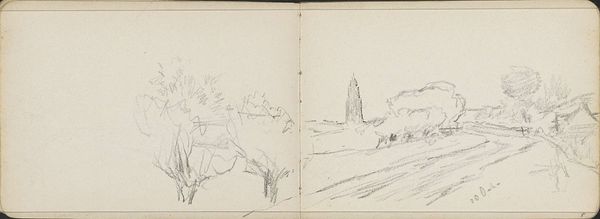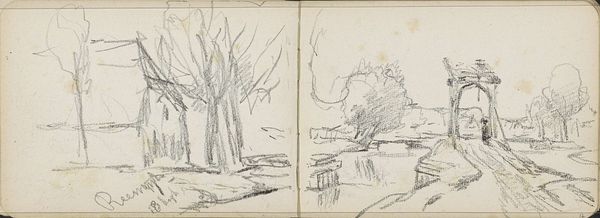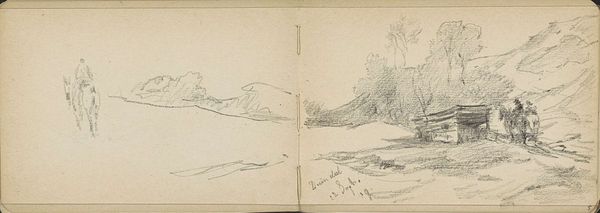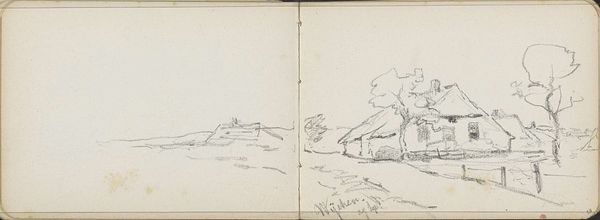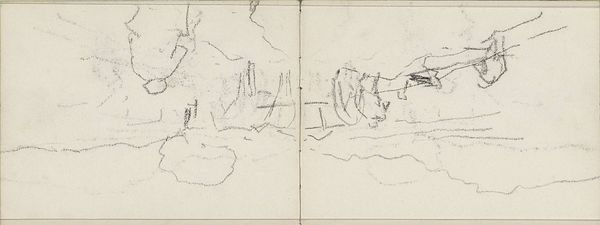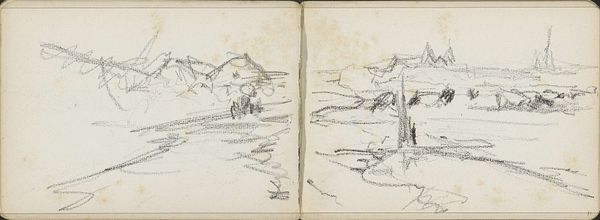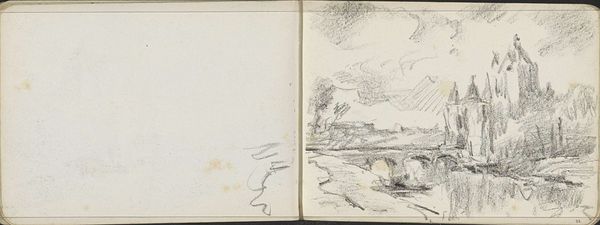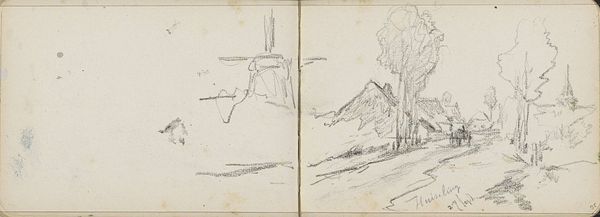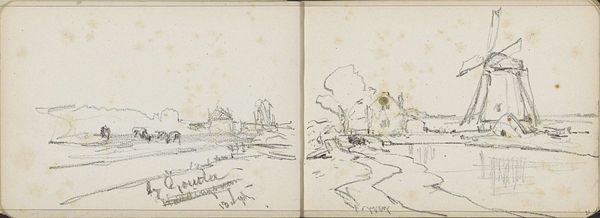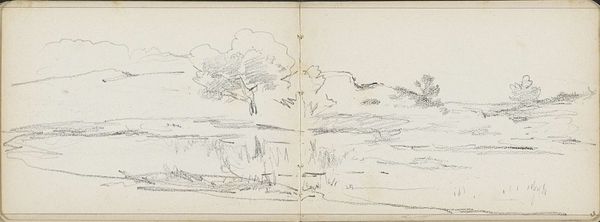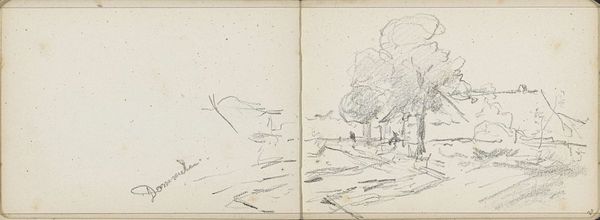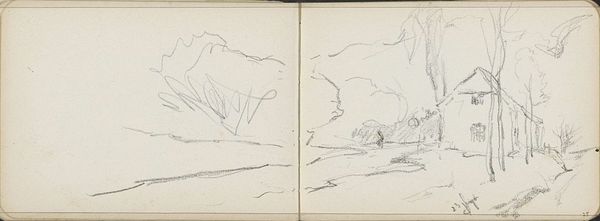
Copyright: Rijks Museum: Open Domain
Curator: Ah, there’s something profoundly affecting about Willem Cornelis Rip's "Schuur aan een waterkant bij Nijkerk," likely made sometime between 1866 and 1929. Editor: My immediate sense is…melancholy. The spareness of the pencil strokes and the misty greys evoke a quiet, almost wistful stillness. Curator: Absolutely. Rip captures a distinct feeling through such simplicity. What grabs me is the structural dichotomy; notice how the diptych format separates the horizon’s distant promise from the earthy solidity of the immediate landscape. Editor: Yes, the composition divides space compellingly, but it is a cohesive vision through repetition of line. Note how Rip uses the frottage technique and sparse lines to mirror shapes across the divide, fostering connection. Curator: Indeed! See how the stark, almost lonely, shed on the right responds to that implied distant church spire on the left? They are echoes of humanity. What's incredible is Rip manages to imbue a quiet reverence with so few lines. It feels both complete and utterly ephemeral. Editor: It is Rip’s focus on spatial relations rather than strict representation that amplifies that sentiment; he understood the communicative power of the simplest elements in our surroundings and harnessed them as visual language. That distant structure would be indecipherable, were it not for the line quality unifying it with our more immediate visual field. Curator: The sketch breathes with unspoken narratives; I can almost feel the dampness of the water, the weight of the sky, the solitary quiet that wraps around the shed. You almost hear the artist's breath. Editor: Precisely; and because of this restraint, the sketch achieves remarkable complexity, presenting to the viewer an image that persists and generates discourse, not because of its detail but its inherent structural framework. Curator: A compelling marriage of feeling and form then; something that keeps giving each time you look. Editor: Quite. Each viewing unlocks nuances previously unnoticed in the landscape’s arrangement; as a result, it compels reconsideration.
Comments
No comments
Be the first to comment and join the conversation on the ultimate creative platform.
